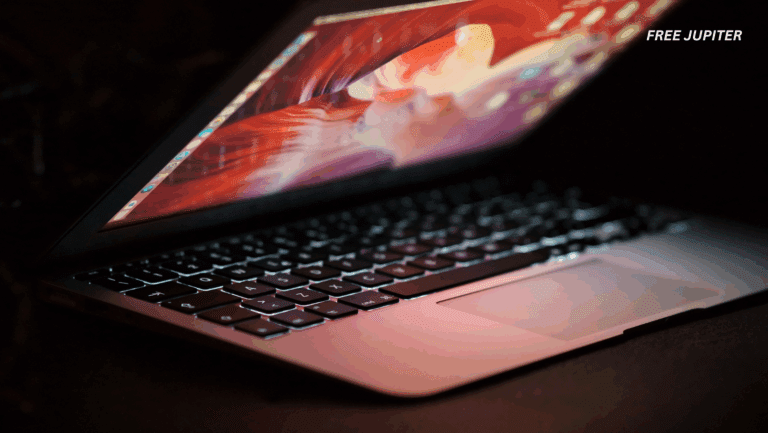Every generation develops habits, rituals, and preferences that make sense to them—but which can feel baffling, outdated, or even annoying to others. These differences aren’t about intelligence or values; they’re shaped by upbringing, technology, and the cultural environment each generation experienced. By exploring these habits, it’s possible to understand both sides better and even find ways to borrow the best from each.
Boomers—roughly those born between 1946 and 1964—grew up with rotary phones, typewriters, and Saturday night TV lineups. Gen Z—roughly those born after 1997—grew up with smartphones, instant messaging, and streaming content on demand. The result? Habits that feel cozy and reliable to boomers can seem alien to younger people.
Here are 12 habits often loved by boomers but frequently questioned by Gen Z, with insights into why they persist and how both generations can meet in the middle.
1. Phone calls and voicemails
For many boomers, a phone call is the fastest and most respectful way to communicate. A live voice conveys tone, urgency, and intention in a way text simply cannot. Voicemails, often long and detailed, were once standard practice for delivering complex information.
Gen Z, on the other hand, is comfortable with concise, written communication. Unexpected calls can feel intrusive, and voicemails are often ignored in favor of texts that can be read and answered on their own schedule.
Bridge: A simple courtesy works wonders: ask first. “Do you have five minutes for a call?” This preserves both respect and efficiency, combining the best of both approaches.
2. Paper everything
Printed documents—bills, boarding passes, checkbooks, meeting packets—were once a lifeline. Boomers trust the physical presence of paper because it doesn’t crash, vanish, or require passwords. Filing cabinets provided order and security.
Gen Z, raised in the cloud era, relies on digital alternatives: PDF receipts, cloud storage, and mobile wallets. Digital formats are portable, searchable, and environmentally friendly.
Bridge: The compromise is often simple: keep important documents digitally backed up but take photos or print only when necessary. This approach satisfies both tangibility and convenience.
Read more: Phrases That Instantly Trigger Narcissists, According to Psychology
3. Long, formal meetings
Boomers frequently see structured meetings as essential for alignment and authority. Agenda items are read aloud, updates are provided one by one, and participation is often formal.
Gen Z tends to value efficiency. Lengthy, static meetings can feel redundant, especially when collaboration tools can deliver the same updates asynchronously. Productivity experts note that the key is clarity: meetings should exist to make decisions, not simply relay information.
Bridge: Ask: “What decision needs to be made?” If the answer is nothing, skip the meeting. When meetings do happen, 15-minute caps and pre-shared documents can streamline discussions and increase engagement.
4. Corporate dress codes
Formal office attire—blazers, heels, polished shoes—is a marker of professionalism for many boomers. Dressing up signals readiness and respect.
Gen Z often sees strict dress codes as restrictive or performative. Authenticity, comfort, and personal style are prioritized over “power dressing.”
Bridge: A flexible baseline works: maintain neat, appropriate clothing while allowing expression and comfort. When people feel comfortable in their appearance, focus and confidence often improve.
5. “Drop by” culture
For boomers, surprise visits—neighbors popping in or friends dropping by unannounced—were a staple of social life. They cultivated community and spontaneity.
Gen Z, accustomed to texting, location sharing, and scheduling apps, prefers planned visits. Unscheduled drop-ins can feel intrusive, breaking focus or disrupting routines.
Bridge: A quick text such as “Are you free for company?” honors both traditions: it keeps social connection while respecting boundaries.
6. Cable TV and channel surfing
Scheduled programming and channel surfing were once central to leisure. Commercial breaks provided rhythm, and waiting for prime-time shows created shared experiences.
Gen Z typically streams content on demand, often skipping ads entirely. They curate media to match identity, values, and niche interests, which makes traditional lineups feel narrow and slow.
Bridge: Communal viewing events—sports games, reality show finales—can merge scheduled viewing with on-demand convenience, allowing both generations to enjoy media together.
7. Email novels and “reply all”
Detailed, formal emails with greetings, paragraphs, and long signatures are hallmarks of boomer communication. They convey professionalism and clarity but can feel cumbersome to Gen Z, who prefer chat apps or threaded messages for speed and efficiency.
Bridge: Use the right tool for the task: chat for rapid exchanges, email for records, and calls for nuanced discussion. Limit “reply all” to essential group decisions to avoid unnecessary interruptions.
8. Collectibles and “stuff as status”
Boomers often accumulate items with personal or symbolic value: heirlooms, collectibles, and objects associated with milestones. These items tell stories, preserve memories, and signal status.
Gen Z gravitates toward minimalism, prioritizing experiences and functional spaces over accumulation. Crowded rooms and garages can feel mentally heavy.
Bridge: Keep objects that carry genuine meaning, and let go of items that take up space without contributing to joy or utility. Minimalism can preserve memory while easing physical and mental burden.
Read more: Psychology Says These 14 Traits Make You Instantly Likable Without Trying
9. Face-to-face by default
In-person interactions are prized by boomers for nuance, trust-building, and human connection. Physical presence was once the default for business, family, and social interaction.
Gen Z often organizes communities, work, and social networks online. Digital communication is not inferior—it’s flexible, scalable, and intentional.
Bridge: Treat face-to-face interactions as meaningful rather than automatic. Online engagement can complement or precede in-person connection, rather than replace it entirely.
10. Landline loyalty
Landlines represent reliability and permanence: no dead batteries, no dropped calls. For boomers, the landline is a trusted tool for personal and professional communication.
Gen Z relies on mobile devices and integrated messaging apps. A single device handles calls, texts, video, and social media. Landlines may feel redundant or inconvenient.
Bridge: Keep landlines as backups for critical calls while embracing the flexibility of mobile technology.
11. Handwritten notes and cards
Writing letters, thank-you notes, or memos by hand is a tradition many boomers cherish. It conveys care and thoughtfulness, and the physical artifact can be treasured.
Gen Z often finds handwritten communication slower or less practical than instant digital messages.
Bridge: Reserve handwritten notes for moments of meaningful recognition or celebration. Digital communication handles routine matters efficiently, while written notes enhance sentiment and personal connection.
12. Scheduled leisure activities
Boomers often plan recreational routines: club meetings, hobby classes, or recurring social events. Predictability provides comfort, structure, and community.
Gen Z values flexibility, spontaneity, and self-directed leisure, sometimes seeing schedules as constraining.
Bridge: Balance both approaches. Structured events can coexist with spontaneous activities, allowing everyone to engage on their own terms.
Generational Insights
Despite differences, both generations share common needs: respect, connection, and effectiveness. Boomers gravitate toward proven methods—calls, paper, face-to-face meetings—while Gen Z prioritizes autonomy, speed, and flexibility. Neither approach is superior; both offer insights into solving life’s challenges.
By treating habits as solutions rather than flaws, intergenerational learning becomes possible. Asking “Why did this habit exist?” or “How could a newer tool improve this?” allows each generation to borrow and adapt strategies that work best.
Read more: 12 Phrases Even Smart People Often Mispronounce
Experiment for the Week
Try one of these swaps for seven days:
- Prefer calls? Text first with context.
- Write long emails? Try bullet points with a clear call to action.
- Bristle at drop-ins? Set a standing coffee date you both agree on.
- Overcrowded space? Let one box go and notice the mental shift.
Most people are a mix of both generations. Observing what no longer fits creates space for something truer—more efficient, more joyful, and more balanced.
Featured image: Freepik.
Friendly Note: FreeJupiter.com shares general information for curious minds. Please fact-check all claims and double-check health info with a qualified professional. 🌱










